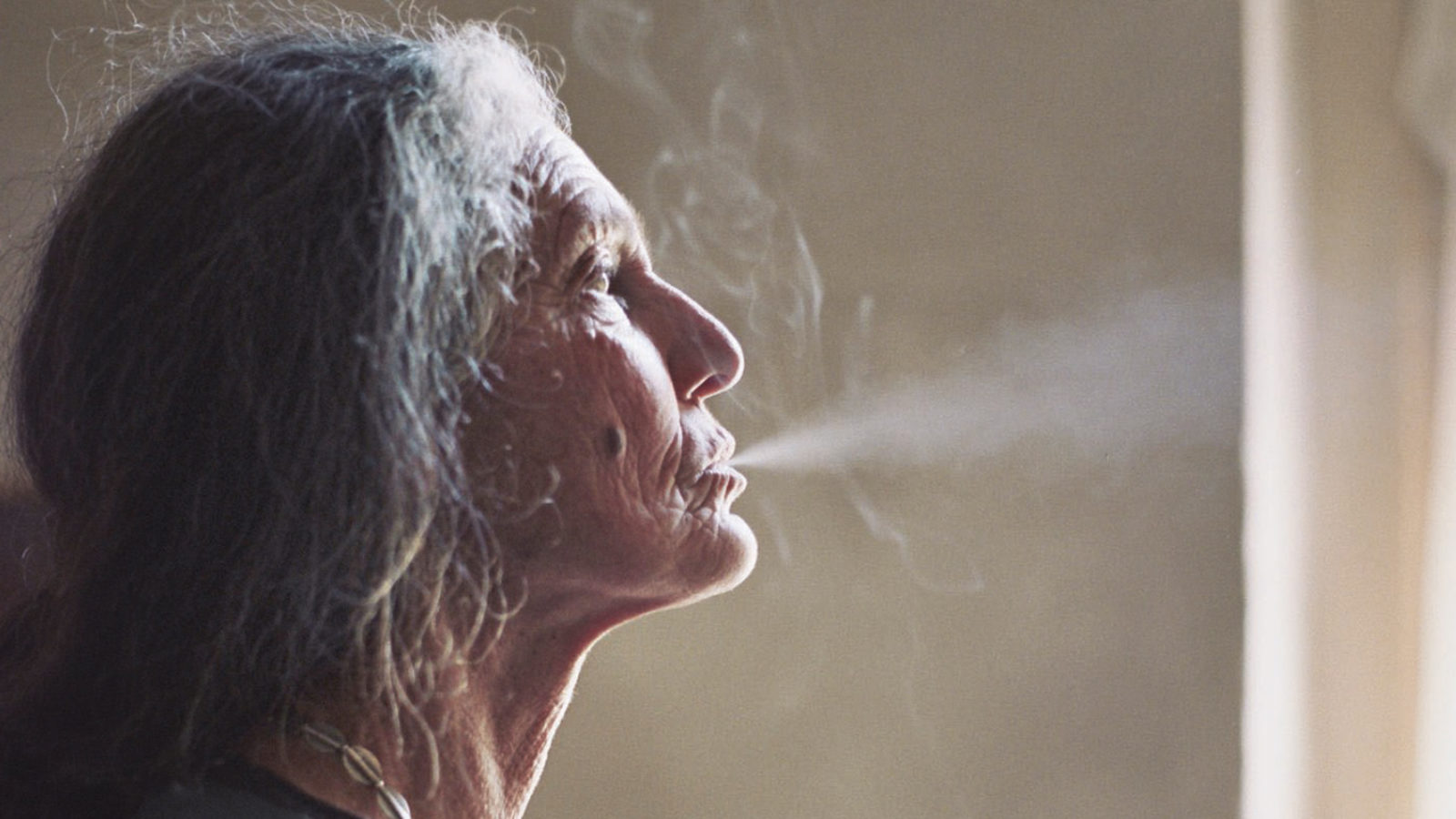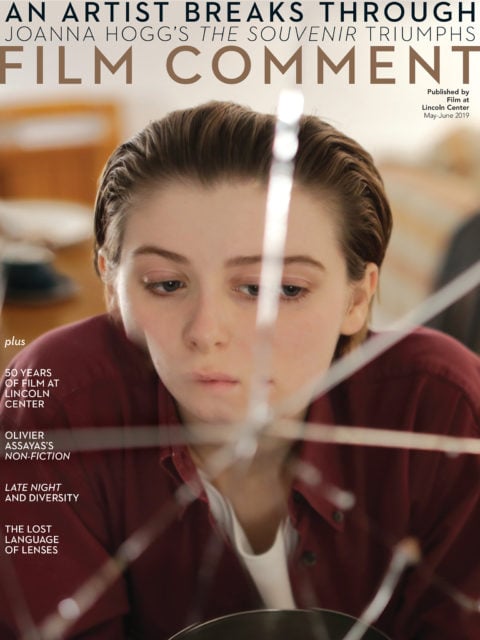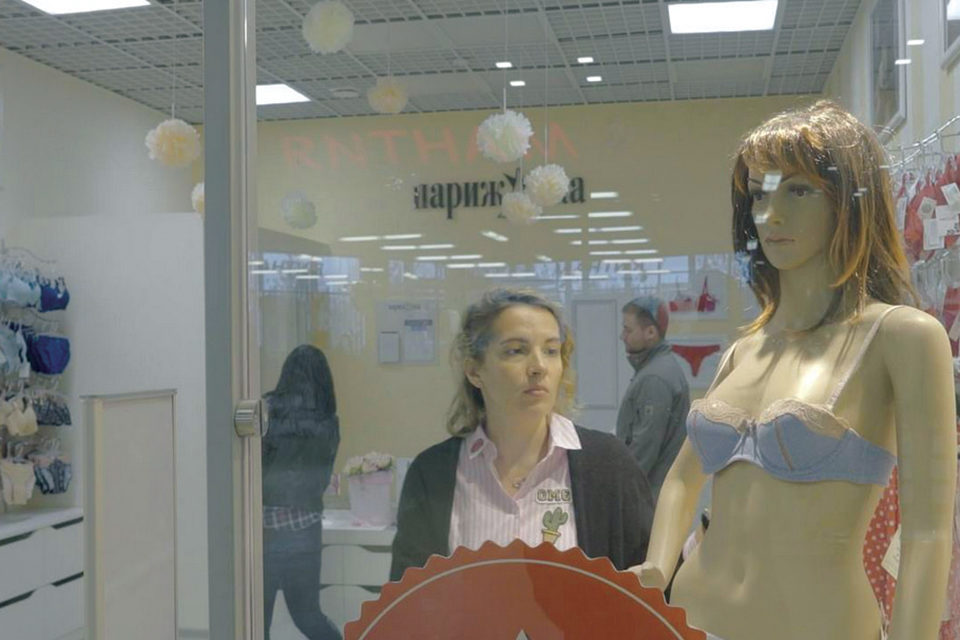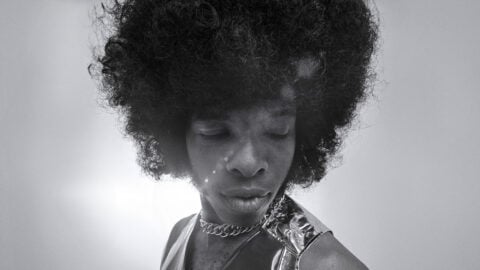
Make It Real: Mistaken Identity
Seeing, actually seeing another person, turns out to be immensely difficult. It’s not just a matter of optics, but also of culture, and history, and fear, and other factors that tend to warp perception. Women, in particular and especially, still rarely are seen without filters of bias, stereotyping, assumptions, fantasy, fear, willful subjugation. As both humans and viewers, moviegoers are left needing to unsee what’s not there, even just to start. In several particularly mindful recent works of nonfiction shown at this year’s CPH:DOX festival in Copenhagen, filmmakers sought to see and represent individual women with clarity and honesty—in certain respects radically so.

In the purposefully methodical and implicitly somber School of Seduction – Three Stories from Russia, director Alina Rudnitskaya spent nearly a decade shadowing three women she originally met at a cynical clinic that taught feminine seduction techniques (captured in her astonishing 2009 short film Bitch Academy). In theory, by following the women after the completion of these sessions, she was documenting how the seduction techniques were being implemented in real-life encounters with men. But in actuality she was making portraits of three singular women in contemporary Russia, shaped over time, as well as and especially by society—by the steady friction between individuality and the merciless expectations of conformity.
Throughout years of tackling other projects—several shorts, though also the mid-length film Blood (2013), an irreconcilably shattering work that stands among the very best of 21st-century nonfiction—Rudnitskaya would check in periodically with Lida, Vika, and Diana, going with them on dates, hanging out in their apartments, and talking about their evolving hopes and dreams. She avoids the more common formal approach of interweaving their stories in favor of presenting their arcs in sequence, so that the film plays as a triptych of portraits. What this does is create space for each to reveal herself without the others’ experiences, or the director’s observations, being blended together or tasked to rhyme with one another artificially. At least structurally, there’s no overarching narrative, or summational idea, hemming in three women already aggressively hemmed in by external forces. The film’s unifying callback is glimpses of the original footage taken at the clinic, where each subject is seen as Rudnitskaya first encountered her—performing ludicrous role-play for the purposes of learning how to ensnare a wealthy partner. Things proceed chronologically from there, from Lida’s ongoing affair with a married man finally shifting to some semblance of domestic stability; to Vika’s resilient ambiguity about everything, including belonging to another; to Diana’s commitment to partnering upward, in full view of her husband and child.

School of Seduction – Three Stories from Russia (Alina Rudnitskaya, 2018)
Toward the end of this third and final chapter, Rudnitskaya uses footage shot by Diana’s adolescent son on a trip to Monte Carlo. With the camera trained on her face in an outdoor café, he calls her out for wanting to be with the millionaire they’ve come to visit, and implies that she’s trying too hard to be elegant—to be something she’s not—noting how her voice changes when he’s not filming her. Diana’s expressions throughout this sequence are impossible to adequately describe, as they flicker from behind layers of labored self-presentation. She’s being seen in this moment—shockingly accurately, based on what Rudnitskaya has also observed—but what her son can’t yet see is why she wears these masks, why she performs as she does. It’s a moment that’s so raw and so devastating not just because she’s been called out by her own son, but also because there’s no incentive in the regressively patriarchal society of Putin’s Russia for her to ever put away the mask. We can see her, but it’s not like the recognition is going to do her any good.
Throughout the post-screening Q&A for School of Seduction at CPH:DOX, Rudnitskaya was asked by the largely Danish audience (the film was shot in St. Petersburg but financed and produced in Denmark, with a Danish editor) to explain the regressive politics of contemporary Russia. These were apparently incomprehensible to a progressive Western European audience. After patiently explaining her culture and the behavior of her subjects to the interlocutors, she finally let them know she wasn’t making an anthropological film about the strange habits of a backwards subculture. “This is me. This is my story,” she said. While she’s frustrated, and wants conditions to be different for herself and others, for there no longer to be a “bifurcated” society, she said, “I am all three women at the same time.” Seeing and being seen doesn’t require moral affirmation, but little is to be gained from judgmental superiority.
The value and purpose of being seen are considered, and actively debated, throughout Beniamino Barrese’s matriarchal portrait The Disappearance of My Mother, which Amy Taubin rightly called “one of the most moving and complex films at Sundance” in these pages when it debuted earlier this year. Like Diana’s son in Rudnitskaya’s documentary, Barrese began filming his mother at a very young age, and what he’s witnessed over the past several decades has remained complicated and in certain ways defiantly obscure. His mother is the internationally celebrated fashion model Benedetta Barzini, a woman who’s made a living from being photographed. Yet as she expresses to Barrese at nearly every opportunity, she despises being photographed, and photography in general. She rails against images, against what they can be used for; she bristles at the implication that she’s being captured, represented, or seen by the camera. She knows the limitations of the image because she’s been manipulating them from within for her entire life. Barzini knows too much—about how images are used, and especially how they’re used to define and limit women. And yet there’s her son, whom she adores and wants to please, obsessed with images, and obsessed with her.

Searching Eva (Pia Hellenthal, 2019)
Therein lies the conflict of the film, with a continuously photographed subject simultaneously resisting the camera’s intrusion and implicitly accepting it. Yet Barzini does more than accept it—she invites Barrese’s camera. Even when she’s explicitly asking for privacy, the existence of this footage implies a complicity between photographer and subject, son and mother, which yielded images purposely and productively fraught with this conflict—a conflict that’s personal and philosophical, historical and generational. She lives spartanly, even slovenly, yet still accepts work on high-end shoots. She dreams of vanishing from view altogether, yet made a film with her son that debuted at Sundance and is traveling the world. There’s an implication at the end of the film that Barzini has fulfilled her fantasy of fully disappearing, which made her casual appearance at the festival in Copenhagen feel like a shock, perhaps even a betrayal for some. But what are we really owed by an image? Even if we’re truly trying to see another person, are they obliged to show us everything? Sometimes what appears is an interrogation of appearance—an interrogation that’s a much truer representation than the merely evident.
There’s no shortage of available evidence in Searching Eva, which debuted at Berlin earlier this year and took home a special jury prize in the main competition at CPH:DOX (a jury on which I served). Eva Collé is an Italian woman who lives in public. A writer, a model, a queer activist, a sex worker, a social media personality—all of these identities apply to Eva. And though all are represented in the film, director Pia Hellenthal takes care to never define Eva, whose notoriety is purposefully dispersed among various social media platforms and avatars. It makes for a distinctly voracious exploration of a person, in which she’s not revealed over time, there’s no core we’re peeling back layers to find, but rather new aspects and identities keep getting added, right until the end. Texturally it’s densely cumulative, incorporating sequences that are effectively music videos, others that are frankly pornographic (in a literal, not pejorative, sense), others that are observational, and all of it seemingly conspiratorial between filmmaker and star.
No matter how many ways we see Eva, we’re really no closer to knowing her. Yet that’s not to say that she isn’t showing herself to us—she is, over and over. It’s rather to say that she, and we as well, aren’t fixed beings—not if we don’t want to be. It’s a liberated film about a liberated woman, and is entirely as fascinating, unpredictable, enervating, and undefinable as could be. What’s radical, i.e. respectful, about Hellenthal’s film—and about all three of these films in their own ways—is how they refuse to reduce the subject to a preexisting package, and instead search for a form that might adapt to the unwieldiness of an actual human life, that might resist our easy assumptions, that might coax us to actually see another person, for once.
Eric Hynes is a journalist and critic, and curator of film at Museum of the Moving Image in New York.







